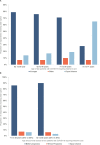Which factors should be included in triage? An online survey of the attitudes of the UK general public to pandemic triage dilemmas
- PMID: 33293401
- PMCID: PMC7725087
- DOI: 10.1136/bmjopen-2020-045593
Which factors should be included in triage? An online survey of the attitudes of the UK general public to pandemic triage dilemmas
Abstract
Objective: As cases of COVID-19 infections surge, concerns have renewed about intensive care units (ICUs) being overwhelmed and the need for specific triage protocols over winter. This study aimed to help inform triage guidance by exploring the views of lay people about factors to include in triage decisions.
Design, setting and participants: Online survey between 29th of May and 22nd of June 2020 based on hypothetical triage dilemmas. Participants recruited from existing market research panels, representative of the UK general population. Scenarios were presented in which a single ventilator is available, and two patients require ICU admission and ventilation. Patients differed in one of: chance of survival, life expectancy, age, expected length of treatment, disability and degree of frailty. Respondents were given the option of choosing one patient to treat or tossing a coin to decide.
Results: Seven hundred and sixty-three participated. A majority of respondents prioritised patients who would have a higher chance of survival (72%-93%), longer life expectancy (78%-83%), required shorter duration of treatment (88%-94%), were younger (71%-79%) or had a lesser degree of frailty (60%-69%, all p<0.001). Where there was a small difference between two patients, a larger proportion elected to toss a coin to decide which patient to treat. A majority (58%-86%) were prepared to withdraw treatment from a patient in intensive care who had a lower chance of survival than another patient currently presenting with COVID-19. Respondents also indicated a willingness to give higher priority to healthcare workers and to patients with young children.
Conclusion: Members of the UK general public potentially support a broadly utilitarian approach to ICU triage in the face of overwhelming need. Survey respondents endorsed the relevance of patient factors currently included in triage guidance, but also factors not currently included. They supported the permissibility of reallocating treatment in a pandemic.
Keywords: covid-19; intensive & critical care; medical ethics.
© Author(s) (or their employer(s)) 2020. Re-use permitted under CC BY. Published by BMJ.
Conflict of interest statement
Competing interests: None declared.
Figures






References
-
- Ferguson N, Laydon D, Nedjati Gilani G. Report 9: impact of non-pharmaceutical interventions (NPIs) to reduce COVID19 mortality and healthcare demand. Imperial College London, 2020.
Publication types
MeSH terms
Grants and funding
LinkOut - more resources
Full Text Sources
Medical
Research Materials
